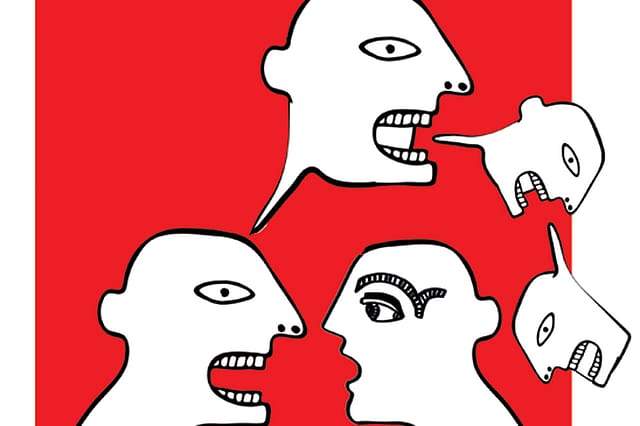Left, Right and Nowhere

YOUR FREEDOM ENDS where my nose begins. As long as what you say or write does not incite violence or cause public disorder, freedom of speech is absolute.
The Supreme Court is wrestling with a slew of issues around the limits of free speech. If hate speech causes communal or caste enmity, it breaks the law. There are established provisions in the Criminal Procedure Code (CrPC) to deal with such breaches of law. There should be no ideological bias in judging these issues, just the sensible application of law.
The controversy over a pro-right bias in social media is facetious. If anything, Facebook and Twitter, for example, suffer from a pro-left bias. Hate posts from left extremists are tolerated. Hate poets from right extremists are banned. Both obviously should be banned. But the bias is clear.
Part of the problem is that the left ecosystem is more united and strategic than the right ecosystem. It moves fast, orchestrates a social media storm and ruthlessly discredits key members of the right. The right ecosystem is more divided and less tactical.
The extreme left disguises its fascism and intolerance to other points of view with finesse. The extreme right lets its fascism hang out to dry.
History favours the left: young people are naturally left-leaning and anti-establishment. The right's demography is older, wealthier and (in America) whiter.
In a battle of perception between hoodies and suits, there can be only one winner.
2026 New Year Issue
Essays by Shashi Tharoor, Sumana Roy, Ram Madhav, Swapan Dasgupta, Carlo Pizzati, Manjari Chaturvedi, TCA Raghavan, Vinita Dawra Nangia, Rami Niranjan Desai, Shylashri Shankar, Roderick Matthews, Suvir Saran
The extreme left covers its tracks well. Some of the worst human rights crimes have been perpetrated by left-communist despots from Mao Zedong and Stalin to Castro and Pol Pot.
The right ecosystem is inarticulate and ponderous. It is shrill and apologetic at the same time, burdened by grievance and constantly seeking approval and validation from the left which treats it with disdain.
Left-leaning TV news channels delight in hectoring members of the right ecosystem who are uncomfortable with English and mumble their way through panel discussions. Left panelists in contrast lie with a straight face and often win the argument.
The left-leaning media in the West forms a cartel of opinion. The modus operandi is well-rehearsed: Reuters flashes a piece of inaccurate news, the BBC follows it up, The Guardian adds context, The New York Times picks up the threads, CNN closes the circle.
The principle of exclusion is an important weapon in the armoury of the left. In media, it ostracises right voices. The left cabal monopolises op-eds in dailies and TV panels. Left-aligned media like NDTV 24X7, The Wire, Scroll, The Caravan, The Telegraph and The Hindu keep up a barrage of negativity.
Good journalism is always adversarial to the government and, to use a tired cliché, must speak truth to power. But it often speaks lies to power. That subverts everything that good journalism stands for.
Criticism is the lifeblood of media. Some of the criticism is ideological. So be it. Some is made up. Again, so be it. Good journalism delivers news and opinion based on facts. The plurality of opinion in a democracy evens out the narrative.
If facts are twisted, the market will punish the newspaper, website or channel. A quick glance at television broadcast ratings (BARC) and the Indian Readership Survey (IRS) show how the market is punishing those who pursue an agenda-driven narrative.
There are fascists on both the left and the right. But those on the left use bullying as standard operating procedure (SOP). The real target of every attack by the leftwing-Congress ecosystem is of course Prime Minister Narendra Modi.
Read between the lines—or the lines themselves—and it boils down to an attack on Hindutva, creeping majoritarianism and the erosion of institutional governance. Some of these criticisms are justified. The Modi Government has failed to tame the bureaucracy, cut over-regulation and take old corruption cases to their conclusion.
Modi's Government must be held to account over its handling of Covid-19, the economy, China and a host of other issues. The criticism should be fierce and fearless. In India, and in the West as well, that is simply not the case.
Left-leaning media deals in fake news to tarnish the government rather than criticise it constructively and offer solutions. Right-leaning media on the other hand behaves like the propaganda machinery of the government and loses credibility. It is appalling to see powerful sections of the electronic and print media allowing themselves to be used as arms of the government, abandoning all critical faculties.
Balance—the cornerstone of journalism—is the victim.
